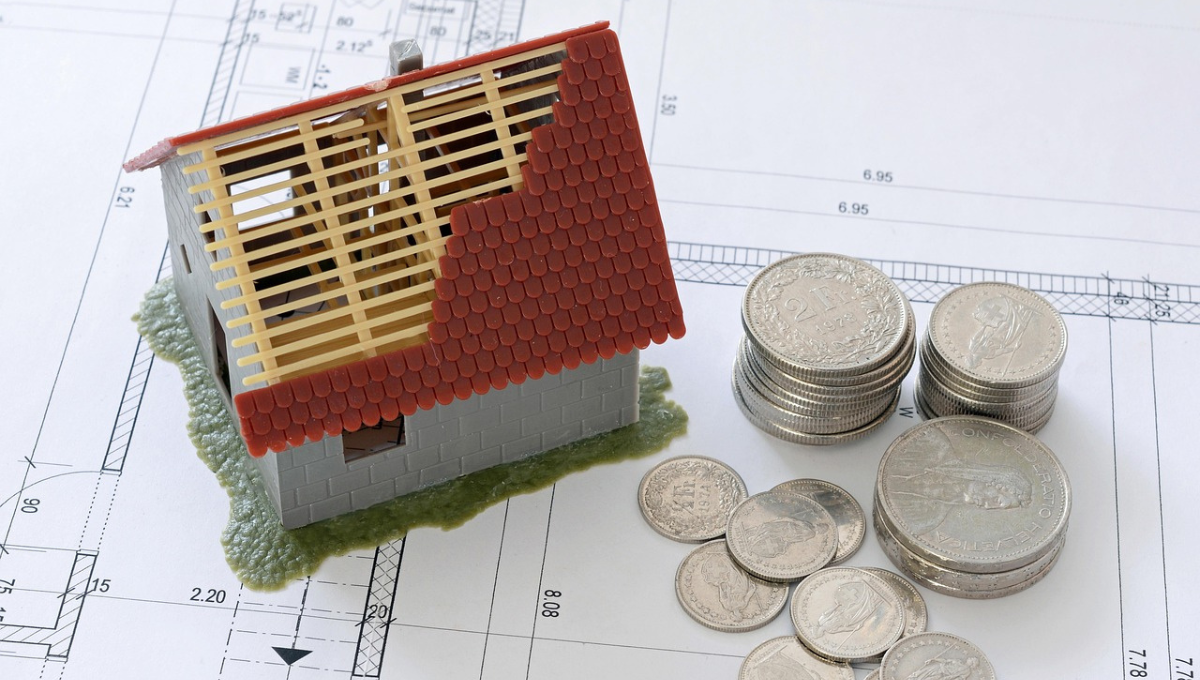Have you ever wondered what keeps homeowners across the U.S. awake at night, worrying about their property? Maybe it’s the howling wind rattling the windows or the faint drip of a pipe that’s seen better days. For millions of Americans, their home is their biggest investment, a sanctuary of memories and security.
Yet, life has a way of throwing curveballs—unexpected disasters and mishaps that threaten this safe haven. When these moments strike, homeowners turn to their insurance policies, filing claims to recover and rebuild. But what exactly are the most common home insurance claims driving these filings?
Understanding these reasons isn’t just about curiosity—it’s about preparation, protection, and peace of mind. In this deep dive, we’ll uncover the top culprits behind homeowners insurance claims in the U.S., explore why they happen, and share practical ways to shield your home from these all-too-frequent threats.
Why Do Homeowners File Insurance Claims?
Homeowners file insurance claims when something goes wrong—damage or loss that their policy covers. It’s the safety net that catches them when the unpredictable happens. According to the Insurance Information Institute (III), about 5.5% of insured homes in the U.S. filed a claim in 2022. That’s roughly one in every 20 homes needing help each year. But what pushes homeowners to pick up the phone and call their insurer? Let’s break it down by exploring the leading reasons, backed by data and real-world insights.
The Most Common Home Insurance Claims in the U.S.
1. Wind and Hail Damage: Nature’s Fierce Duo
Wind and hail top the list as the most frequent reasons homeowners file insurance claims. These weather-related culprits account for over 40% of all claims, according to a five-year study by the III spanning 2017-2021. Whether it’s a hurricane tearing through coastal states or a thunderstorm pelting the Midwest with hail, the damage can be swift and severe.
- Why It Happens: High winds rip shingles off roofs, topple trees onto homes, and shatter windows. Hail, often underestimated, pummels roofs and siding, leaving behind costly repairs. States like Texas and Minnesota see this often, with Texas dubbed the “hail capital” of the U.S.
- Key Fact: The average wind and hail claim costs $13,511, making it the third most expensive property claim type.
- Prevention Tips:
- Trim trees near your home to reduce falling branch risks.
- Install impact-resistant roofing materials.
- Secure outdoor items before a storm hits.
Wind and Hail Claims by Frequency and Cost (2017-2021)
| Cause | Percentage of Claims | Average Cost per Claim |
|---|---|---|
| Wind and Hail | 40.1% | $13,511 |
2. Water Damage and Freezing: The Silent Destroyers
Water damage, including issues from freezing pipes, ranks second, affecting about one in 60 insured homes annually. From burst pipes in winter to leaking appliances, water sneaks in and wreaks havoc, often unnoticed until it’s too late.
- Why It Happens: Pipes freeze and burst in cold snaps, especially in states like Texas, where a 2021 freeze caught many off guard. Aging plumbing or neglected maintenance also leads to leaks from washing machines or water heaters.
- Key Fact: Water damage claims average $13,945, placing them among the priciest property claims.
- Prevention Tips:
- Insulate pipes in unheated areas like basements.
- Replace old hoses on appliances every 5-10 years.
- Shut off water mains during extended absences in winter.
Real-Life Example: In February 2021, Texas homeowners filed thousands of claims after a historic freeze burst pipes statewide, costing insurers billions.
3. Fire and Lightning: Rare but Ruinous
Fire and lightning claims don’t happen often—only one in 385 homes files one yearly—but when they do, they’re devastating. These incidents rank fourth in frequency but first in cost, averaging a staggering $77,340 per claim.
- Why It Happens: Cooking mishaps, faulty wiring, and lightning strikes spark fires. California’s wildfires, for instance, have driven up claims in recent years, with over 332,000 acres burned in 2023 alone.
- Key Fact: Fire and lightning account for 23.8% of claims but 25% of total claim costs due to their severity.
- Prevention Tips:
- Keep a fire extinguisher in the kitchen.
- Check electrical systems regularly.
- Install lightning rods in storm-prone areas.
Fire and Lightning Claims Snapshot (2016-2020)
| Cause | Frequency (per 100 homes) | Average Cost per Claim |
|---|---|---|
| Fire & Lightning | 0.26 | $77,340 |
4. Theft: The Unwelcome Visitor
Theft claims are less common, making up about 1% of total claims, but they hit homeowners hard emotionally and financially. The average payout is $5,024, the lowest among major claim types.
- Why It Happens: Break-ins often occur in urban areas or during vacations when homes sit empty. Jewelry, electronics, and apparel top the list of stolen items.
- Key Fact: One in 474 homes files a theft claim annually in Texas, a relatively low rate compared to weather-related issues.
- Prevention Tips:
- Install a security system with cameras.
- Use deadbolts and smart locks.
- Avoid posting travel plans online.
5. Liability Claims: When Accidents Strike Others
Liability claims, covering bodily injury or property damage to others, are rare—only 0.09% of claims—but costly at $26,175 on average. Think dog bites or a guest slipping on your icy steps.
- Why It Happens: Pets, poorly maintained walkways, or pool accidents often trigger these claims. Nearly one-third of liability claims involve dog bites.
- Key Fact: These claims make up just 2% of total filings but can lead to lawsuits, spiking costs.
- Prevention Tips:
- Train pets and post warning signs if needed.
- Keep walkways clear and well-lit.
- Fence off pools with self-latching gates.
Regional Variations: Where Claims Hit Hardest
Where you live plays a huge role in the type and frequency of claims you might file. Coastal states like Florida, Louisiana, and Texas face hurricanes and flooding, while California battles wildfires. Midwestern states like Minnesota deal with hail and windstorms. Here’s a closer look:
Top States for Home Insurance Losses (2015-2019)
| State | Average Annual Losses | Common Claim Type |
|---|---|---|
| California | $8 billion (2019) | Fire & Lightning |
| Florida | High frequency | Wind & Hail |
| Texas | High severity | Wind, Hail, Water |
| New York | Moderate | Wind, Water, Freezing |
- Florida: Leads with wind and hail claims due to hurricane season. Average premiums hit $2,165 in 2020.
- California: Fire claims dominate, with insurers paying out heavily after wildfires.
- Texas: A mix of hail, wind, and water damage keeps claims high and costly.
The Cost of Filing: What Happens After a Claim?
Filing a claim isn’t just about fixing damage—it can affect your wallet long-term. Here’s what to expect:
- Premium Hikes: On average, premiums rise 7-10% after one claim. In 2022, homeowners with a claim paid $168 more annually than those without.
- Multiple Claims: Filing three or more claims in five years might lead to non-renewal by your insurer, forcing you into high-risk pools like FAIR Plans.
- Deductibles: New trends show wind and hail deductibles jumping to 1-5% of your home’s value. For a $500,000 home, that’s $5,000-$25,000 out of pocket.
Tip: Weigh repair costs against your deductible. If damage is minor, paying out of pocket might save you from rate increases.
How to Protect Your Home and Avoid Claims
Prevention is your best defense. Here are actionable steps to reduce your risk:
- Weather-Proofing: Reinforce roofs, seal windows, and elevate appliances in flood zones.
- Maintenance: Inspect plumbing, electrical systems, and trees yearly.
- Security: Add alarms and cameras to deter thieves.
- Insurance Check-Up: Review your policy annually to ensure coverage matches your needs.
Real-Life Insight: A Minnesota homeowner avoided a $10,000 hail claim by upgrading to impact-resistant shingles—a $3,000 investment that paid off during a 2023 storm.
The Bigger Picture: Trends Shaping Claims in 2025
The home insurance landscape is shifting. Climate change drives more severe weather, pushing claims up 55% since 2023 in some areas. Rising construction costs—up 21% per the House Rebuilding Cost Index—mean higher payouts. Insurers are responding with stricter rules and higher rates, especially in high-risk states like Florida and California, where some companies have stopped writing new policies.
- Key Finding: In 2025, expect premiums to climb as insurers offset losses from billion-dollar disasters—20 in 2024 alone, per NOAA.
- Homeowner Sentiment: A LexisNexis survey found 72% of homeowners are willing to pay more for adequate coverage, reflecting growing awareness of risks.
Closing Thoughts: Safeguarding Your Home, One Step at a Time
Owning a home is a journey filled with pride, responsibility, and the occasional unexpected twist. From the relentless fury of wind and hail to the quiet drip of a leaking pipe, the reasons homeowners file insurance claims reveal the vulnerabilities we all face.
Yet, there’s hope in understanding these threats. By knowing the most common home insurance claims—wind and hail, water damage, fire, theft, and liability—you’re not just a bystander to fate. You’re empowered to act, to protect, and to prepare.
As 2025 unfolds with its promise of new challenges, take a moment to walk your property, check your policy, and fortify your defenses. Your home isn’t just a structure—it’s your story. And with a little care, you can ensure it stands strong against whatever comes next.
References
- “Homeowners Insurance Claims Statistics (2024)” – Policygenius
- “Homeowners Insurance Claim Statistics and Facts” – Bankrate
- “7 Most Common Homeowners Insurance Claims” – Kin
- “Facts + Statistics: Homeowners and Renters Insurance” – Insurance Information Institute
- “Home Insurance Outlook 2025: Severe Weather, Building Costs Drive Up Premiums” – Forbes







